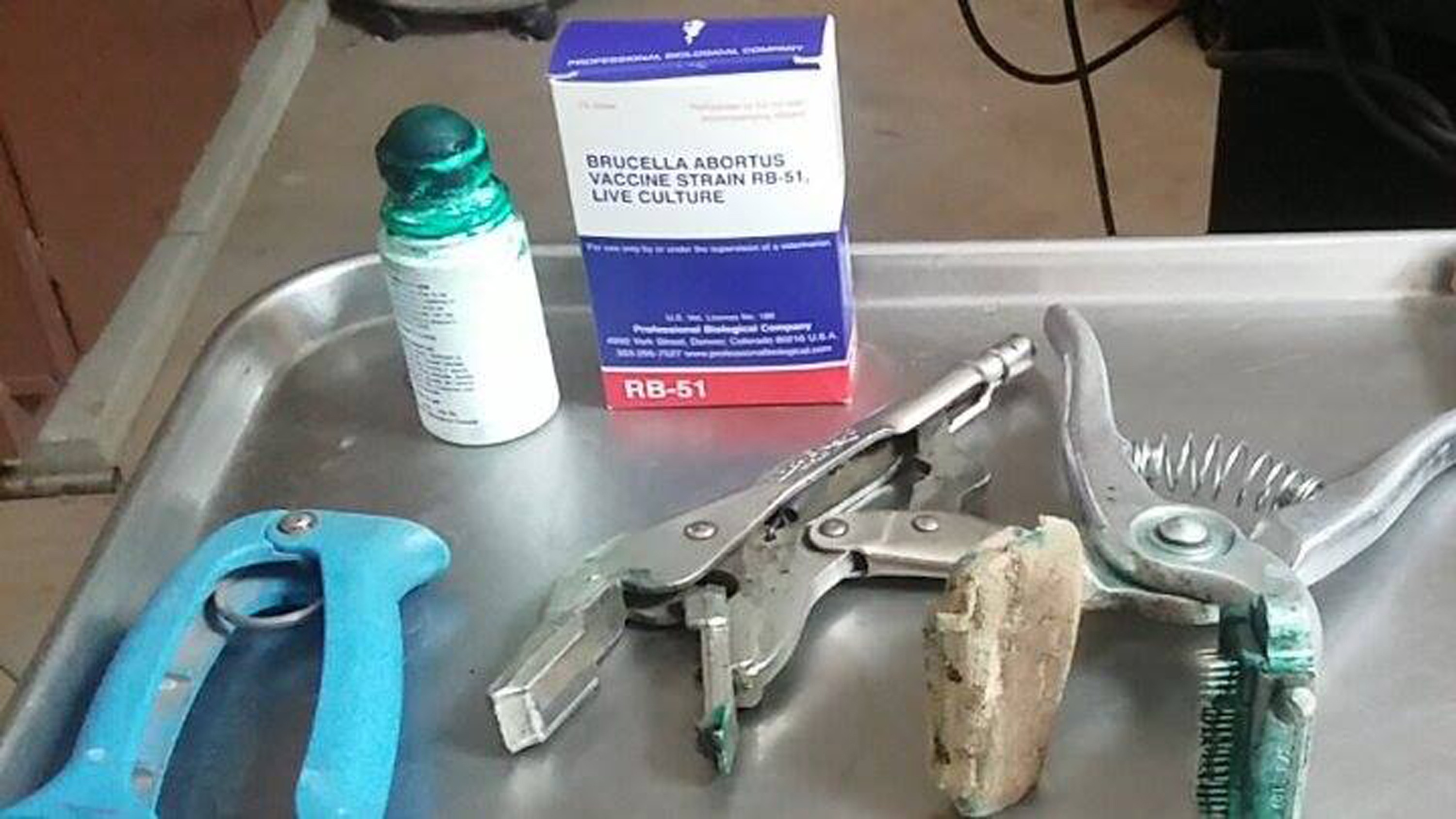Farm & Ranch
The Big Deal About Brucellosis

By Jessica Crabtree and Dr. Jered Harlan
What is brucellosis?
Brucellosis is a contagious disease that occurs when animals carrying Brucella bacteria infect other animals. It is caused by a group of bacteria scientifically known as the genus Brucella.
This disease can affect cattle, goats, camels, dogs, bison, cervids (meaning elk and deer), as well as pigs.
There are three different species of Brucella that cause the gravest concern: B. abortus, which affects cattle, bison and cervids; B. suis, which affects swine and may also affect cattle and bison; and B. melitenis, which affects goats, although not presently in the United States. Commonly, this disease is known as contagious abortion disease or Bangs.
In cattle and bison, brucellosis largely affects the reproductive organs as well as the udder. Therefore, bacteria are shed in the milk or the aborted fetus, afterbirth or other secretions from the reproductive tract.
The serious disease has symptoms such as abortion, stillborn, calves born very weak, retention of fetal membranes, signs suggesting infection in the membranes and swollen or infected testicles in a bull. The disease can be diagnosed through laboratory testing samples of blood or milk.
Diagnosis can even be made from laboratory cultures of brucella abortus from the placenta, vaginal discharge or the milk from an infected cow. Unfortunately there is no treatment for brucellosis. That is why detection and prevention are essential.
Brucellosis is not a disease to be taken lightly. The disease has the potential to significantly impact animal health, public health and, consequently, international trade.
To read more pick up a copy of the June 2017 NTFR issue. To subscribe call 940-872-5922.
Farm & Ranch
Managing Show Cattle Through The Winter

By Heather Welper
Husband and wife duo, Heather and Calvin Welper, are the Co-Owners and Operators or Two C Livestock, located in Valley View, Texas.
The pair’s operation has a show cattle focus where they raise and sell purebred heifers of all breeds and club calf Hereford steers.
When it comes to show cattle, the Welpers know a thing or two including how to prepare for the cold winter months and the Texas major show season run.
To read more, pick up a copy of the November edition of North Texas Farm & Ranch magazine, available digitally and in print. To subscribe by mail, call 940-872-5922.

Farm & Ranch
Double M Ranch & Rescue

By Hannah Claxton, Editor
As the sun rises each day, so do the dozens of mouths that Meghan McGovern is responsible for getting fed. Rather than the sounds of a rooster crowing, McGovern hears the bellows and bleats of a variety of exotic deer, the chortle of kangaroos, the grunts of water buffaloes, and the chirps of a lemur.
Nestled against the banks of the Red River, the Double M Ranch and Rescue, with its high game fences and deer sprinkling the landscape,s its in stark contrast to the surrounding ranches.
“Having deer is kind of like eating potato chips- you can never actually have just one,” said McGovern with a laugh.
McGovern has several herds to take care of- fallow deer, axis deer, water buffalo, goats, and bison. In smaller numbers, there’s also a few kangaroos, a lemur, a potbelly pig, a pair of zebras, a watusi, and a few horses.
To read more, pick up a copy of the November edition of North Texas Farm & Ranch magazine, available digitally and in print. To subscribe by mail, call 940-872-5922.

Farm & Ranch
Acorn Toxicity

By Barry Whitworth, DVM, MPH
With the prolonged drought, most pastures in Oklahoma end up in poor condition. With the lack of available forage, animals may go in search of alternative foods.
If oak trees are in the pastures, acorns may be a favorite meal for some livestock in the fall. This may result in oak poisoning.
Oak leaves, twigs, buds, and acorns may be toxic to some animals when consumed.
To read more, pick up a copy of the November edition of North Texas Farm & Ranch magazine, available digitally and in print. To subscribe by mail, call 940-872-5922.

-

 Country Lifestyles2 years ago
Country Lifestyles2 years agoScott & Stacey Schumacher: A Growth Mindset
-

 Country Lifestyles8 years ago
Country Lifestyles8 years agoStyle Your Profile – What your style cowboy hat says about you and new trends in 2017
-

 HOME8 years ago
HOME8 years agoGrazing North Texas – Wilman Lovegrass
-

 Equine1 year ago
Equine1 year agoThe Will to Win
-

 Outdoor10 years ago
Outdoor10 years agoButtercup or Primrose?
-

 Country Lifestyles5 years ago
Country Lifestyles5 years agoAmber Crawford, Breakaway Roper
-

 Country Lifestyles9 years ago
Country Lifestyles9 years agoJune 2016 Profile – The man behind the mic: Bob Tallman
-

 Country Lifestyles8 years ago
Country Lifestyles8 years agoDecember 2016 Profile, Rusty Riddle – The Riddle Way




